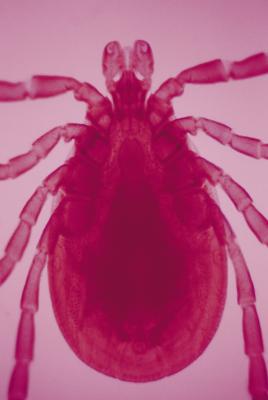Most parents want to see their children turn off the TV and play outside, but they may not be aware of the danger lurking in the grass and the woods. Lyme disease in young children often occurs because children are playing outside. According to MayoClinic.com, this disease is the most common tick-related one in the United States.
Risk Factors
The U.S. Department of Labor Occupational Safety and Health Administration (OSHA) reports that areas in the Northeast and the Great Lakes regions of the United States and an area in northern California have the highest risk for Lyme disease. The tick species that carry Lyme disease live in wooded areas with heavy leaf litter and in areas with tall grass. Based on statistics from the Centers for Disease Control and Prevention (CDC), boys between the ages of 5 and 9 are at the most risk for getting Lyme disease.
Causes
Lyme disease in children is the result of bacteria from ticks transferring to humans. According to the CDC, the transfer occurs when a tick infected with Borrelia burgdorferi bites a child. Ticks may come in contact with the bacteria by drinking blood from animals, such as squirrels, mice and deer. In the north and central parts of the United States, deer ticks, also called black-legged ticks, are responsible for transmitting the disease. A closely related species, the western black-legged tick, is responsible for cases occurring in the Pacific coastal region.
Symptoms
A study conducted by the University of Connecticut School of Medicine’s pediatrics department concentrated its research on children and Lyme disease. In the group, which had a median age of 7, a rash was the first symptom in 89 percent of participants. OSHA describes the rash as one that can look like a bull’s-eye. The rash can occur in one spot, which happened in 66 percent of cases, or cover several areas. Other symptoms reported by MayoClinic.com include flu-like symptoms, joint pain, heart conditions and neurological problems.
Stages
Lyme disease can occur in three stages: primary or stage 1; early disseminated which is stage 2; and chronic persistence, stage 3. The stage depends on the length of the illness and the severity of the symptoms. Most children treated for stage 1 Lyme disease recover without further complications or advancement of the disease, according to the University of Connecticut School of Medicine.
Treatments
The treatment options for Lyme disease can depend on the age of the child and the symptoms present. According to the Johns Hopkins Arthritis Center, children under the age of 9 can take antibiotics for treatment, but they should not take the antibiotic doxycycline. The standard treatment for children under the age of 8 is 250mg of amoxicillin taken three times daily for 20 to 30 days. Children over the age of 9 can take 500mg of amoxicillin three times a day or 100mg of doxycycline two times a day for 20 to 30 days. Alternative medications are available for children with penicillin allergies. Doctors may decide to use a modified treatment plan for patients who have advanced stages of the disease or rare symptoms.
Misconceptions
According to the American Lyme Disease Foundation, adult ticks can be active all year long. Many people think ticks are only a risk during the summer and spring, when ticks tend to feed more frequently. If you live in a high-risk area and your children play outside on a regular basis, they could be at risk, even if it is the middle of winter. Another misconception is that any tick bite will lead to Lyme disease. According to MayoClinic.com, this isn’t true — a minority of tick bites results in Lyme disease, not the majority.





